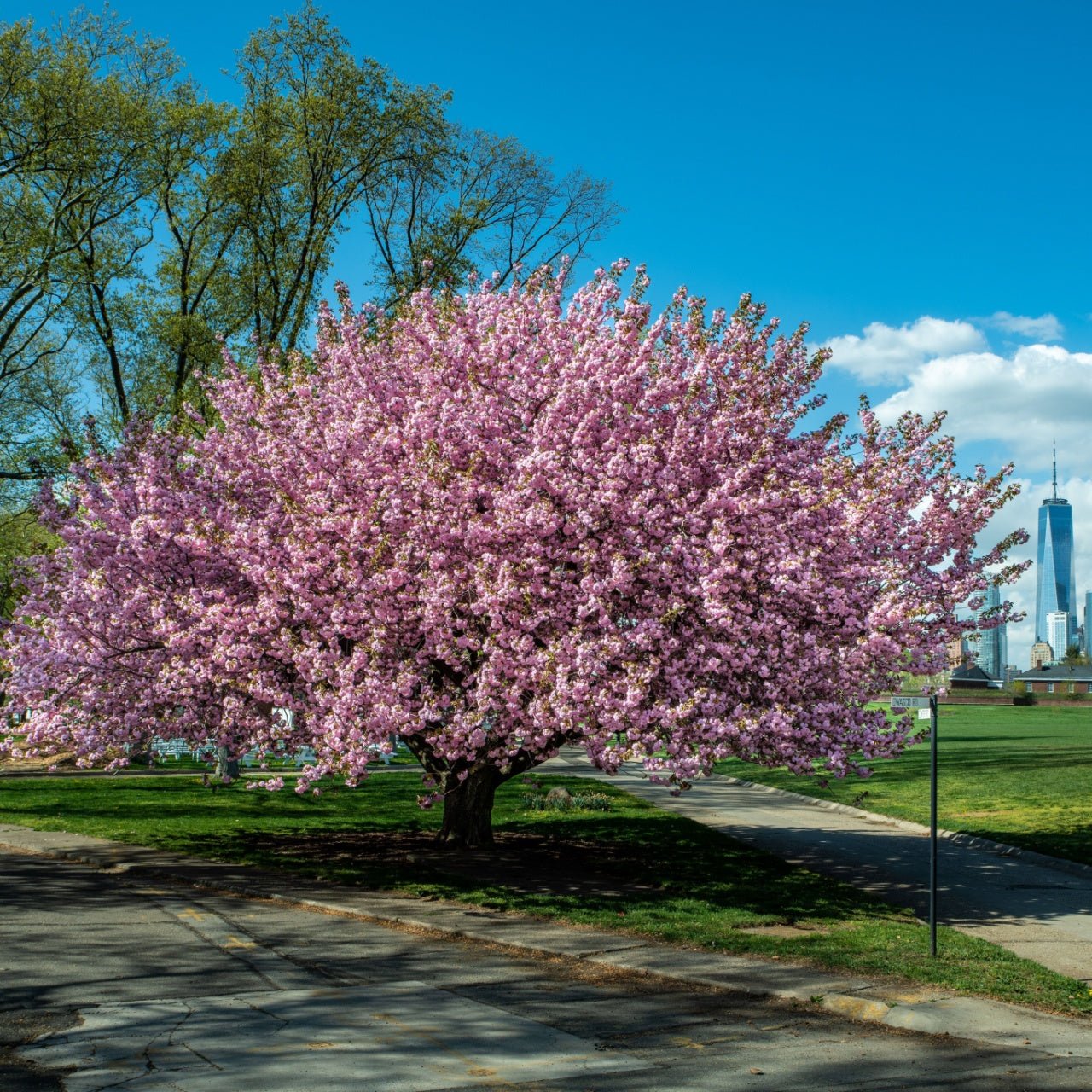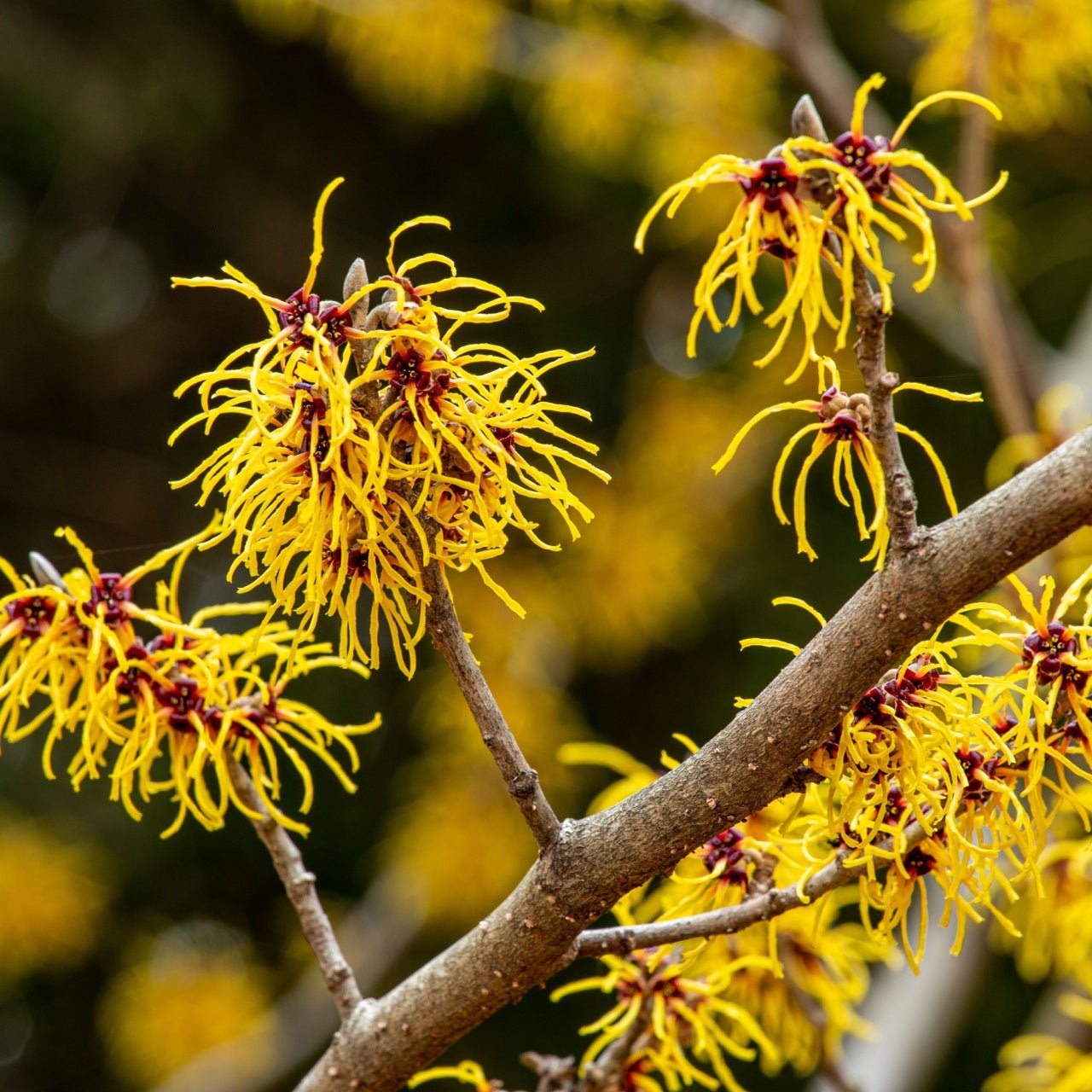
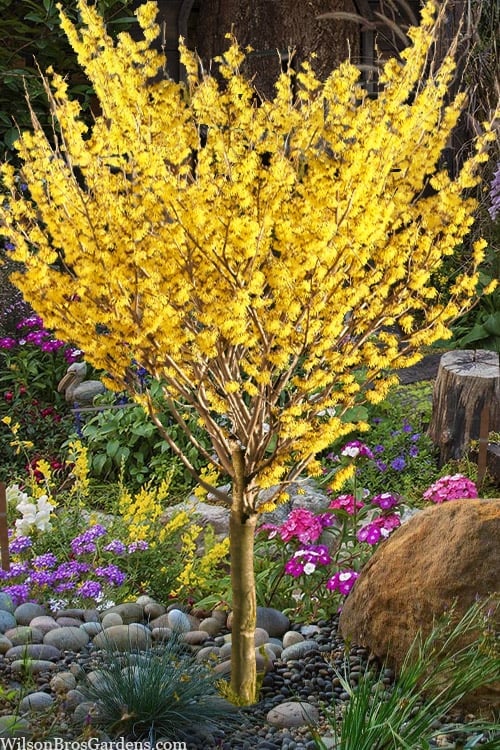
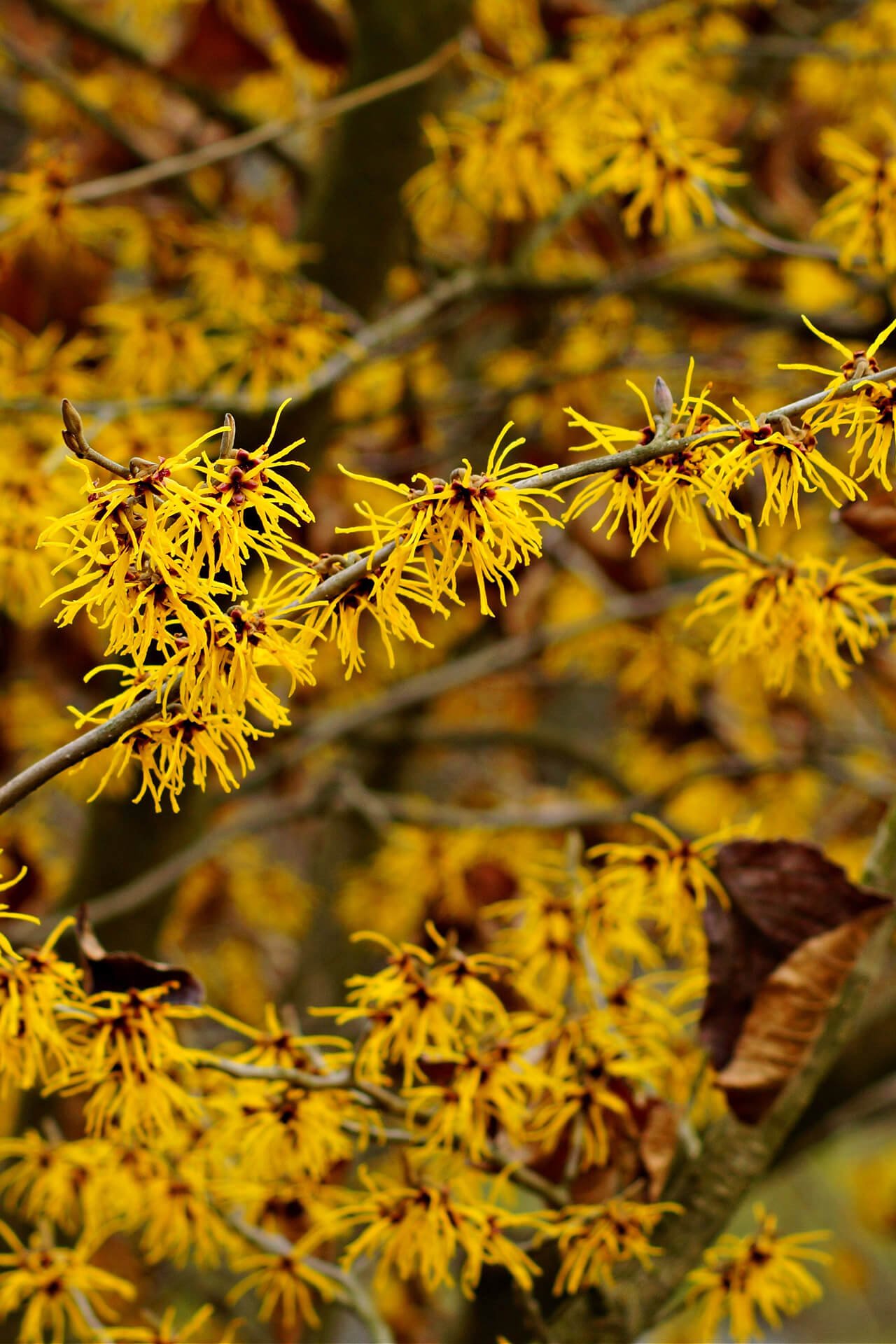


Witch Hazel
Excellent for natural privacy screening
Low-maintenance, adaptable to various soils
Vibrant fall foliage and winter blooms
Thrives in
ZONE 3-9This plant ships:
Ships Week of May 19th1 Year Guarantee on all plants
Witch Hazel: Hamamelis Virginiana
Witch Hazel (Hamamelis virginiana) is a deciduous shrub with sparse, spidery flowers and is versatile throughout the seasons. As it blooms brightly in fall and needs very little maintenance, this shrub is a popular choice for bringing visual interest to any garden.
Witch Hazel - A Fall-Blooming Shrub
It is very easy to grow and prefers a well-drained, slightly acidic soil type. It does well in full and partial shade and suits most gardens. Put the root ball in a hole twice its size and fill it with dirt and water to keep it moist. Once established, it is spartan, requiring only occasional watering in dry conditions and a bit of pruning to shape or slash off damaged branches.
Seasonal Blooms and Color Changes
It is prized for its unusual and beautiful flowers, which open late in the fall or winter when most other plants are hibernating. The flowers contain long, rolled petals of different colors, such as yellow, orange, or red. The plant's ovate leaves shade it in spring and summer, becoming yellow before the flowers appear in autumn.
Shape and Longevity Of This Native Shrub
The shrub is spreading and rounded and reaches 10 to 15 feet. Its small size and graceful branches make it wonderful for borders, woodland gardens, or as a specimen plant. It will survive decades of neglect.
Life Cycle - TN Nursery
Witch Hazel shrubs are hand-harvested at TN Nursery and shipped as healthy, ready-to-plant plants. These plants set themselves quickly, leaving you with distinctive, fall-flowering, long-lasting flowers. Add this shrub to your yard for an old-school and classic touch!
This Is How Your Plants Will Look upon Delivery

Bloom Season
Fall
Bloom/Foliage Color
Yellow
Height at Maturity
Over 10 Feet
Care
Witch Hazel thrives in well-drained soil and benefits from regular watering, especially during dry spells. Prune in late summer to shape and remove dead branches. Spread a proportional fertilizer in early spring to sustain healthy growth and blooming.
Plant Reproduction
Witch Hazel spreads via seed dispersal and root suckers.
Plant bare-root shrubs during the more excellent spring or fall months, from November through April. Dig a hole twice as wide as the root system and slightly more profound than its height. Position the shrub so that the top of the roots is level with the ground, and put back the soil dug over the roots. Apply a 2-3 inch layer of mulch around the base to retain moisture and suppress weeds, ensuring the mulch does not touch the shrub's stem. Water regularly, especially during the first year, to establish strong roots. Prune shrubs as needed to promote healthy growth. In the spring, fertilize with a balanced, slow-release fertilizer suited to the specific needs of the shrub.
Shipping date depends on the date displayed and chosen when you order from the product's page.
We only accept returns on plants verified dead. If you think your plants have died, we offer a 1 year warranty, please use this File a Claim Link to verify dead plants and start with return warranty process.






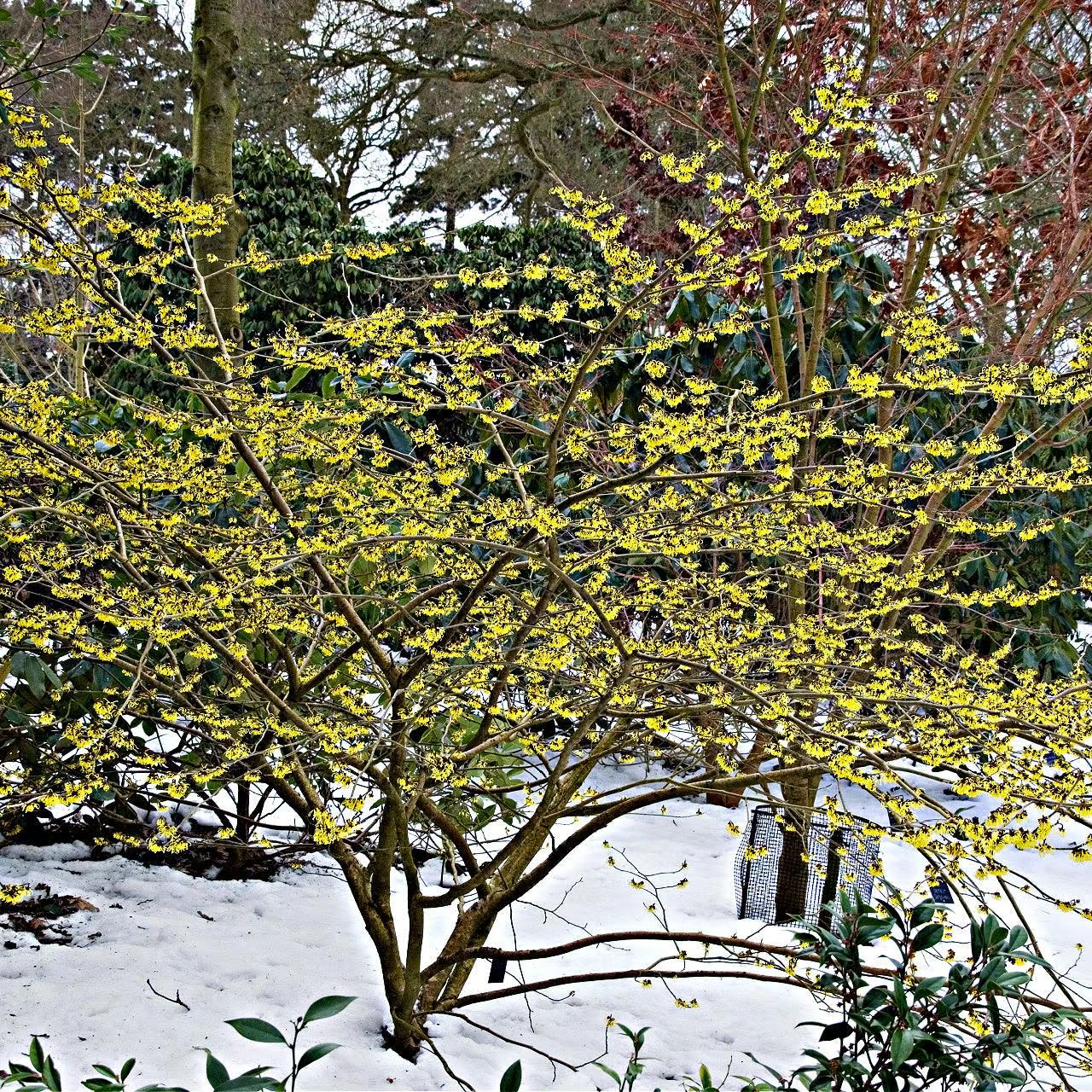
Winter Blooms:
Witch Hazel produces vibrant, fragrant yellow or orange flowers even in the coldest months, brightening up winter landscapes.
Medicinal Uses:
Traditionally known for its astringent properties, Witch Hazel can be used for its natural healing benefits.
Versatile Growth:
This tree thrives in a variety of soil types and light conditions, making it a flexible choice for diverse garden settings.
Attracts Wildlife:
The flowers draw pollinators like bees and butterflies, enhancing the biodiversity of your garden.
Caring Tips
How do I care for my Witch Hazel?
Each box contains detailed care instructions and information about your product. But here's the basics.
Care Tips
Witch Hazel thrives in well-drained soil and benefits from regular watering, especially during dry spells. Prune in late summer to shape and remove dead branches. Spread a proportional fertilizer in early spring to sustain healthy growth and blooming.
Light Requirements
Witch Hazel thrives best in partial shade to full sun. It prefers dappled sunlight, especially in hotter conditions, but can endure full sun in cooler regions. This versatile shrub adapts well to various light conditions, making it easy to grow.
Hardy Planting Zones
3-9
Header
Use this content to share information about your store and products.
Frequently Asked Questions
How often should I water my plants?
How do I know if my plant is getting too much or too little sunlight?
What should I do to prepare my plants for winter?
What are the signs that my plant needs fertilizing?
How can I prevent pests from damaging my plants?
How do I choose the right plant for my climate zone?









